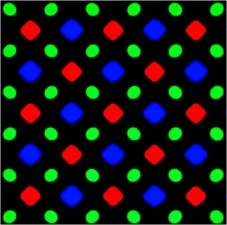There are those that bemoan the detachment of much of modern life from the seasons and many (the lucky ones with gardens and countryside to walk in) have found this Covid year has given them a chance to get back more in tune with nature and the rhythm of life. But the display industry has its own annual pulse.

The year kicks off with CES which usually has some TVs and plenty of new technology. ISE arrives at the end of winter, with lots of AV news and MWC with smartphone overload. The spring includes lots of new TV announcements and briefings for the models planned for the holiday season. Then we have the build up to NAB and SID and Infocomm and their aftermath followed by the market release of all those new TVs. By the summer, the events are running out, but every other year there is either a World Cup or Olympics to spike consumer interest in new and better sets.
September sees IFA and IBC and in the second half of the year there is a shift to interest in other parts of the world, with (traditionally) Ceatec in Japan and with IMID and Touch Taiwan. IDW in Japan is later in the year.
For ten years or so, Apple has usually released its flagship iPhone and new iOS verion in September. And so, a feature of August has been the release of a new Samsung handset, usually in the Note series. This year, Samsung announced the Galaxy Note 20 and like the first nightingale that signals the spring, the move into the second half of the year is heralded by a detailed review from Ray Soneira, who announces “Lots of New Records” for the quality of the display. This year is no exception.
More & More Perfection
A couple of years ago, I noted that it is getting harder for the best brands to distinguish themselves as more and more of the performance of the displays on smartphones got ‘Visually Indistinguishable from Perfect’. On the one hand, I wonder why, if the performance is so perfect, why Ray bothers to measure these things any more. However, the cynical part of me knows that product engineering and design is a continuous series of trade-offs and compromises. If Ray stops, will makers start to trade off the items that he no longer watches to improve those that he does?
![]() The Galaxy Note 20 uses the Diamond subpixels that have been on many of its OLED designs to compensate for the relatively weak performance of the blue material
The Galaxy Note 20 uses the Diamond subpixels that have been on many of its OLED designs to compensate for the relatively weak performance of the blue material
Anyway, there are still areas of display performance that can be improved. Although I have often disagreed with Ray and his views on resolution, he has been very faithful to his view (which is widely shared) that performance in high ambient light should be improved and his analysis shows that Samsung is continuing to improve this are of the display. That’s good as August will mean lots of bright days in the part of the world that I live in!
The Note 20 not only has the highest full screen brightness (1,037 nits at 100% APL) and highest peak brightness of (1,609 nits at Low APL), the display has the lowest screen reflectance at 4.4%. That delivers the highest contrast level he has measured of contrast in ambient light (236 for 100% APL and 366 for Peak Brightness). The performance is helped by a better implimentation of the dual ambient light sensors that he has long advocated.
One of the new features that Ray liked is the increase in maximum display refresh rate to 120Hz and he said that the feature
“noticeably improves the Smoothness in image Scrolling and Videos, plus Motion and Gaming Performance in Apps, and may also reduce Screen Flicker that some people experience”
The Note 20 has a circular camera aperture that was measured at 3.5mm, which Ray points out is just 0.1% of the total display area and the small size is a factor in helping the display to achieve a 92% Screen-to-body rating.
Samsung also hits the mark in six areas where either performance was already good enough to be ‘Visually Indistinguishable From Perfect’ or, in the case of gamut coverage, with performance that is wider than the range of colours that will be in the content, so of mainly academic interest.
Despite the boost in brightness and performance, Ray points out that the power efficiency of the new display is 16% higher than the Galaxy Note 10+. That’s a big win. As a number of analysts in the recent SID Display Week Business Conference pointed out, the radios in 5G smartphones use more power, so unless battery life is reduced, there is a need for displays to get more efficient.
So, all in all, the Note 20 Ultra looks like a significant improvement over previous models. Samsung really has done an amazing job of pushing on the performance of its mobile OLED technology at a faster rate than LG has been able to improve its WOLED technology for TVs.
You can find Ray’s full review here. (BR)

